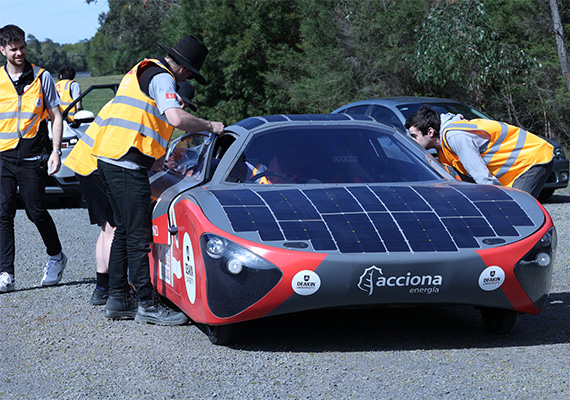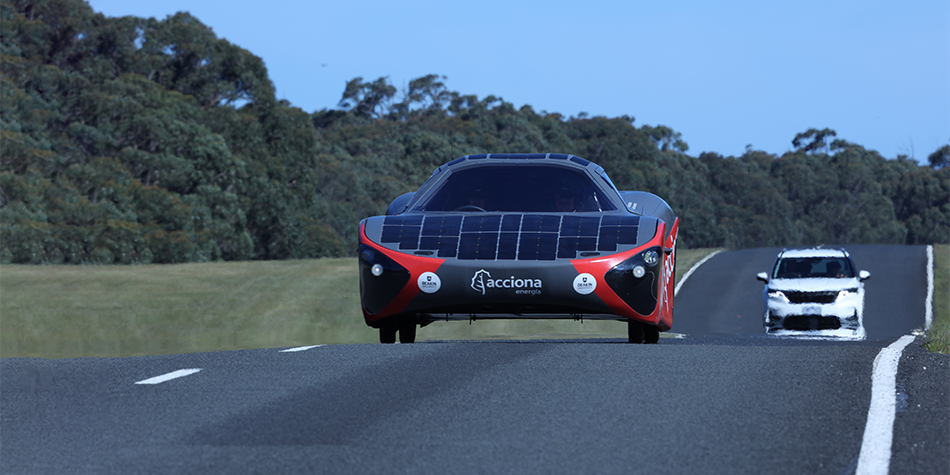After almost three years of lockdowns, COVID interruptions, a postponed race, makeshift home workshops and online learning, Deakin’s dedicated engineering students achieved a remarkable goal: they designed, built and raced a solar car for the 2023 World Solar Challenge.
The road to the race
The 2023 Bridgestone World Solar Challenge took place from October 20–27 and spanned 3000 kilometres from Darwin to Adelaide. Engineering teams from around the world competed with self-designed solar cars over five gruelling days, crossing one of the planet’s most challenging environments – outback Australia – powered solely by the energy of the sun.
As the Deakin team worked tirelessly in the lead-up to the race, they also reached an exciting milestone: testing the car, an important step in their journey.
'We cannot wait to take this car for a spin,' said Angus McDonald, a Deakin engineering graduate and the solar team's head mechanical engineer, during the testing phase.
'The whole idea of a student-built, hyper efficient, safe, electric solar vehicle makes the whole project so exciting. To be able to drive this car is not only a thrill, but something that makes me really proud.'
In the months leading up to the race, the team fine-tuned their design and measured the car’s power through dyno testing to prepare for the epic journey.
Xander Profaca, who began working on the project in March 2020 – just a week before Victoria went into lockdown – graduated with a Bachelor of Mechatronics (Honours) and continued contributing as the lead mechatronics engineer.
'The thing that excited me most was using so many cool technologies to construct a real, working car,' Xander said. 'Some days coming into the workshop and seeing the car, it hit me – I built that. It gave me such a sense of pride knowing I helped bring the project to life.'


